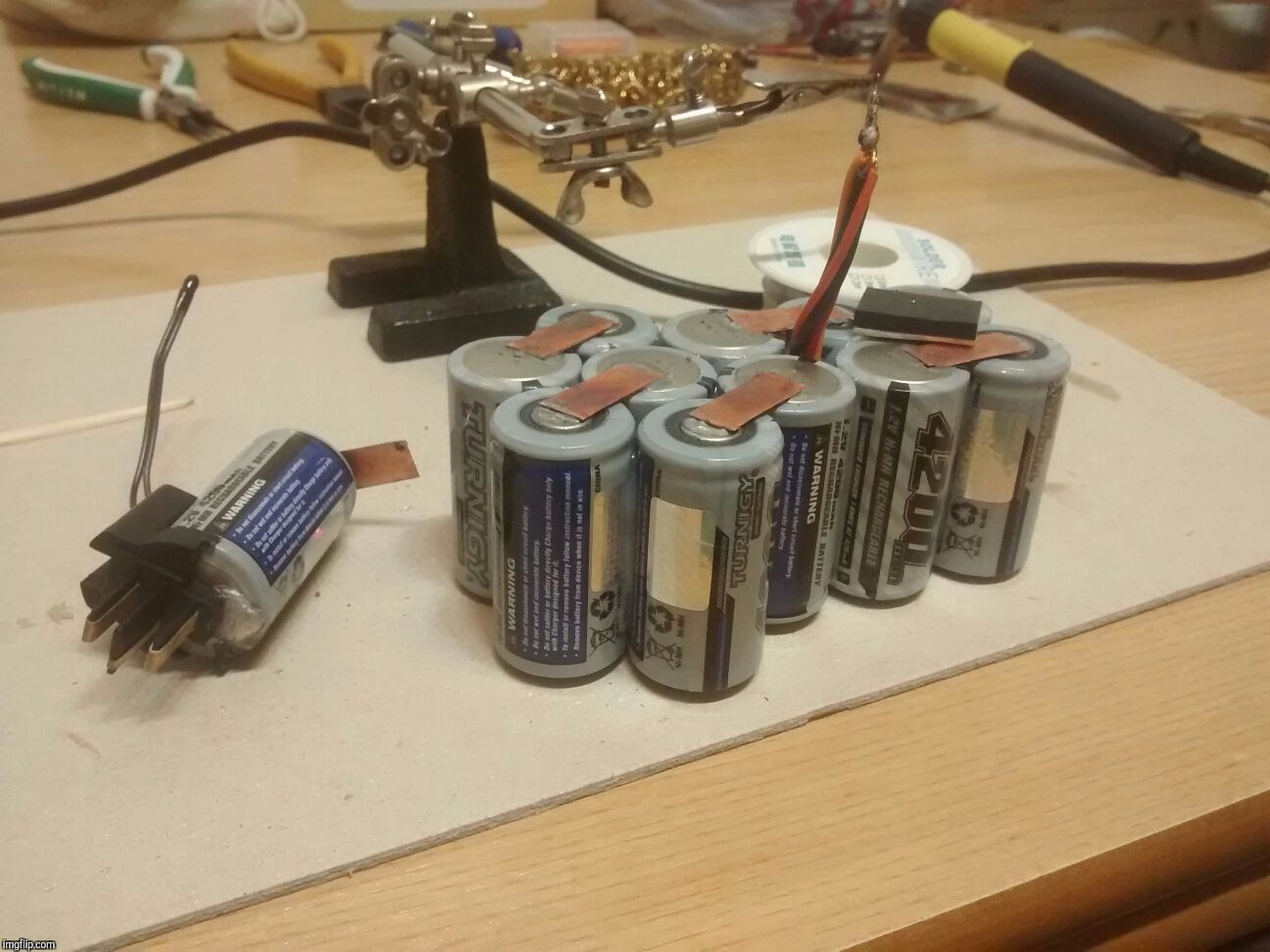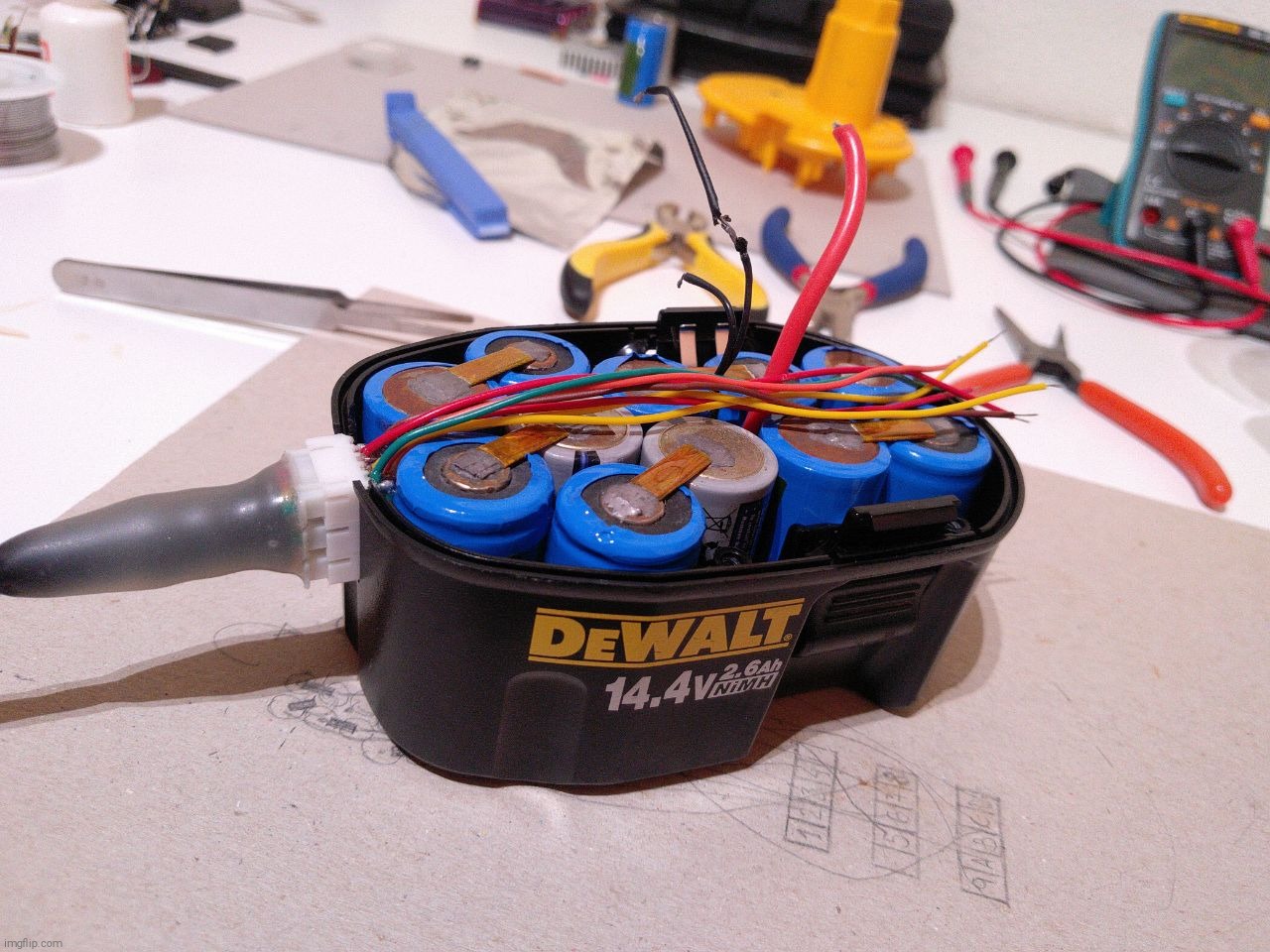Particularly I myself do solder li-ion cells. Using a combination of steel flux and low temperature solder, a Bi50Pb32Sn18 Rose metal variant (tap/click here to see where I get it, zhuykoff merchant @ ebay), soldering cells is a breeze.
The Roomba Ni-MH pack is a 12S sub-C one, doesn't it?


Left picture is a big bag of Bi50Pb32Sn18 pellets. Right picture is a Dewalt De9502 battery pack rebuild I did more than two years ago. I switched to a multiple strand solder wick approach since then. The fellow I gave the battery pack to broke it soon afterwards, he left the pack discharged a few days and it died because at least one of the cells got reversed. When a Ni-MH cell is left to rest polarity reversed, it rests forever (dies). Along with a new pack I built with Turnigy sub-C 5000 (cough!) mAh cells, I rebuild that pack sometime later, swapping a dead cell and another one whose internal resistance was a tiny bit above that of the rest:

Since I found no shrink wrap for sub-C cells, I used wrap meant for 26650 cells, that is the reason their newer blue wraps look overly big for them. That is a balancing connector, btw; not really necessary with Ni-MH, though, as a long, gentle trickle charge does it.
Turnigy sub-C 5000 mAh cells can be purchased at HobbyKing.com. Slightly overrated, but as far as I know they're the highest performing sub-C cells in the market. 